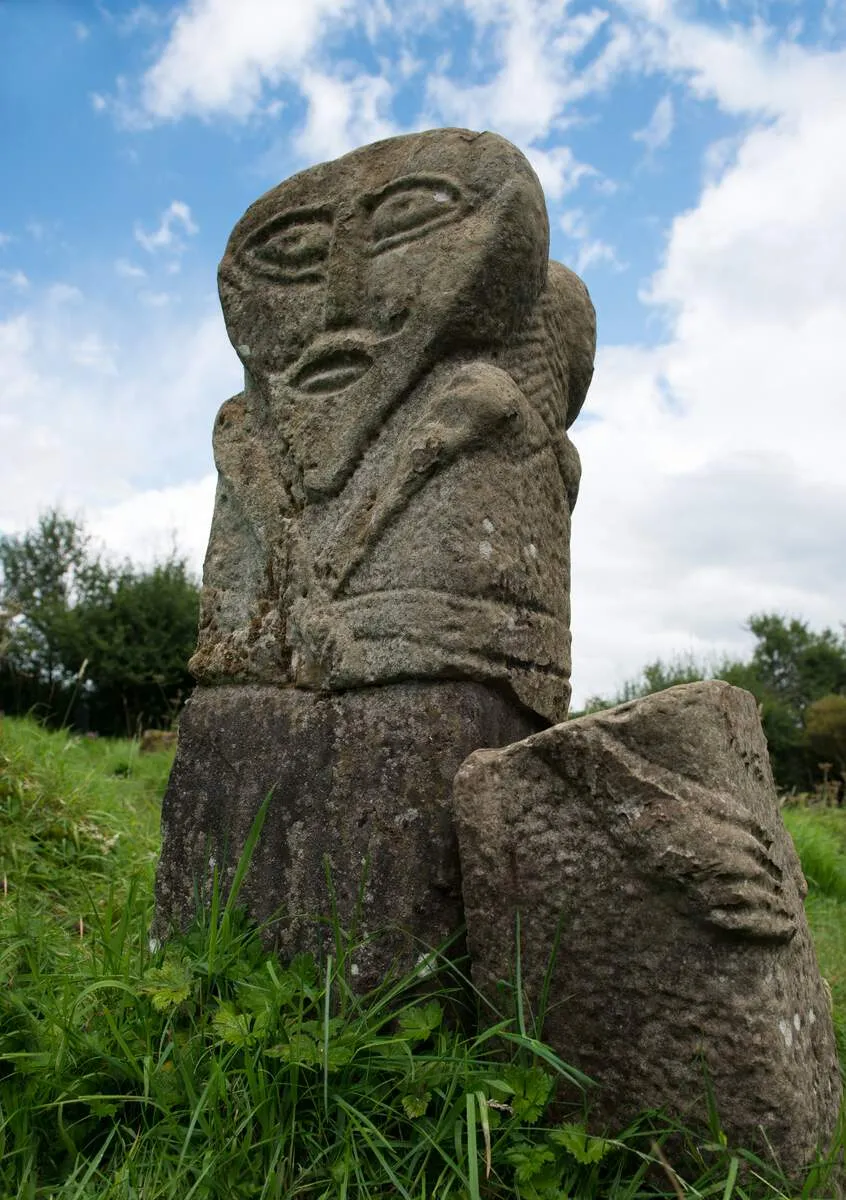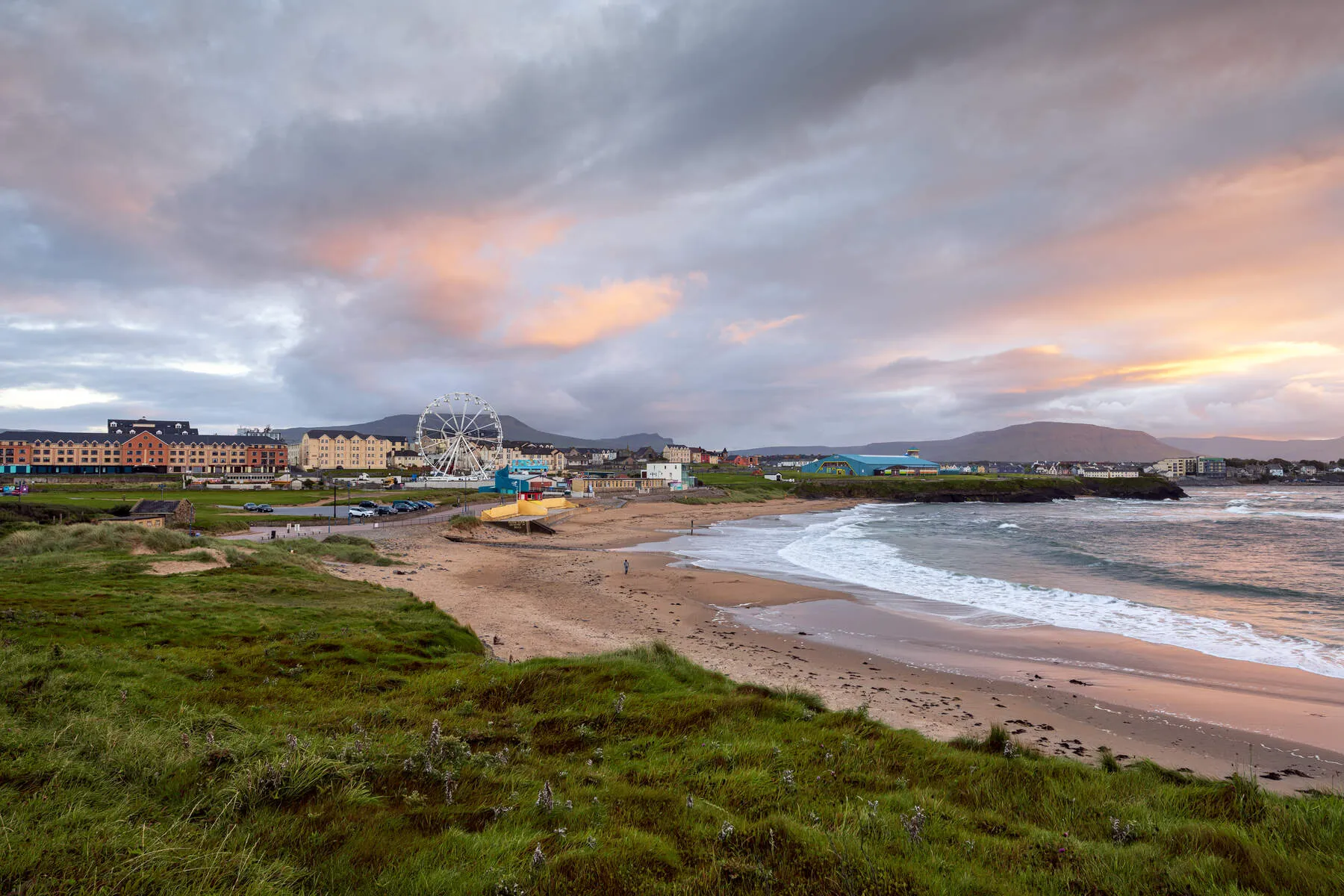Bundoran Main Beach, right at the southern tip of County Donegal, is famous throughout Ireland, known especially as the country's "Surf Capital." Having hosted European Surfing Championships, its reputation attracts surfers drawn to the powerful waves rolling in from Donegal Bay and the Atlantic. But Bundoran's story goes back much further than surfing. Its original Irish name, Bun Dobhráin ("foot of the little water"), points to its coastal setting, and it became a tourist spot way back in the 18th century for wealthy visitors. The arrival of the railway in 1868 really boosted its popularity, merging two villages and cementing its status as a fashionable Victorian seaside resort, complete with grand hotels like the Great Northern and private bathing boxes on the beach.
Access to the beach wasn't always guaranteed. In 1870, a local canon, Canon Kelaghan, won a legal fight to ensure public right of way to the shore, making it a beach for everyone. The town's history includes landmarks like the 1777 Bundoran Lodge and poignant memorials like the one dedicated in 2010 to victims of the 1980 Central Hotel fire. Nearby, natural curiosities like the Fairy Bridges sea arch and the Wishing Chair have been attracting visitors since the 1700s, adding a touch of folklore. Modern developments, like the 2024 plan to redevelop the old Astoria Ballroom site, show the town continues to evolve.
The Main Beach itself is a 500-meter stretch of golden sand, bordered by rocky areas and a promenade that connects easily to Bundoran's lively Main Street. At low tide, a large sandbar appears, changing the waves and expanding the beach area significantly. Lifeguards are on duty from June to August, but swimmers need to be aware of rip currents and changing tides, particularly near the Rougey cliffs. For surfers, the sandbar creates sought-after left and right breaking waves at low tide, best when the swell is 2-5 feet. Unusually, these waves often work best with onshore winds, attracting experienced surfers. The beach usually holds Blue Flag status for its water quality and safety (though it missed out in 2019), and a beach wheelchair became available in 2022, improving accessibility.
A visit here means being close to everything: cafes, the Waterworld indoor water park, and Macks Amusements are just steps away. Families often enjoy the Roguey Walk, a scenic cliff path that passes a memorial to a WWII plane crash. Surf schools like Bundoran Surf Co. offer lessons right on the beach. In June, the beach comes alive with the Bundoran Sea Sessions music festival. It manages to be both a challenging surf spot and a family-friendly beach, though swimmers should always be cautious due to strong currents.
When to go depends on what you're looking for. Summer offers lifeguards, warmer water, swimming, and festivals. Surfers might prefer the autumn swells or aim for dates linked to past championships (like 1985 or 2011) for potentially classic conditions. But beyond the waves and sandcastles, Bundoran beach is steeped in history – from 17th-century skirmishes to Victorian holidaymakers, and now its modern fame as a world-renowned surf hub.
Getting There
On the Beara Peninsula: The R572 is the main road leading to the ferry departure points near Castletownbere. The drive through West Cork is beautiful but involves narrow and winding roads, so allow ample time.
Parking
On-Site & Nearby Parking:
The beach itself has paid parking that can fill up quickly during peak season (June to September). Nearby public parking areas, such as the New Council Offices carpark (located where the old railway station stood), likely offer additional spaces, though fees for these areas are not explicitly stated.
Free Parking Options:
Many nearby hotels and guest accommodations provide free private parking, including the Holyrood Hotel, Rougey Lodge Hostel, Rolling Wave Guest House, and Ocean Bliss. Visitors staying at these properties can park for free.
Peak Season Tips:
During busy periods, arrive early to secure a spot. If on-site parking is full, consider using hotel lots or public carparks farther from the beach. Street parking in town is limited and may require navigating narrow roads.
Accessibility & Distance:
The beach is within a 5-10 minute walk from most parking areas in the town center. While accessibility facilities aren't detailed in sources, major hotels likely offer disabled parking spaces for guests.
Payment & Restrictions:
Paid parking fees and payment methods (cash/card) at the beach aren't specified, so check signage on-site. No strict time limits are noted, but spaces may rotate during peak hours to manage demand.
Nearby Attractions

Bundoran Golf Course
Perched on rugged cliffs overlooking Donegal Bay, Bundoran Golf Club isn't just old – it's one of Ireland's founding golf courses, dating back to 1894. Right on the Wild Atlantic Way, this classic lin...
Distance: 0.2 km

Boa Island Janus Stones
Tucked away in the quiet Caldragh Cemetery on Boa Island (the largest island in Lower Lough Erne), you'll find the fascinating Boa Island Janus Stones. The most famous is the double-sided 'Janus figur...
Distance: 27.7 km
